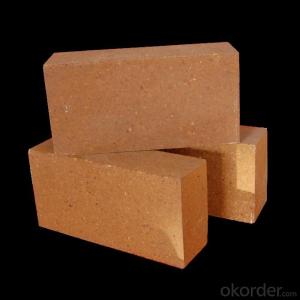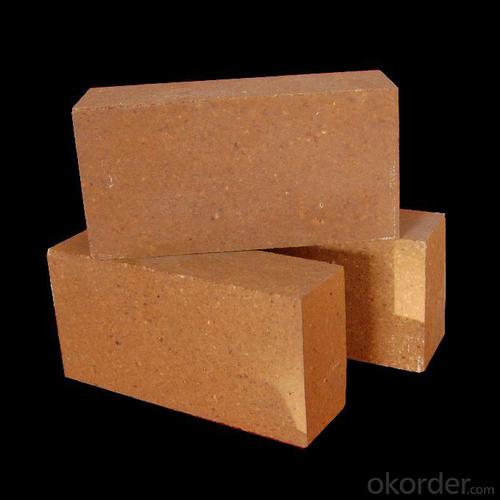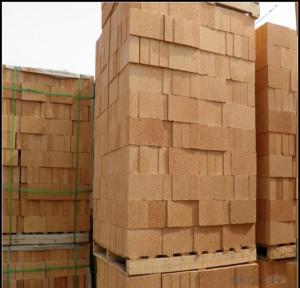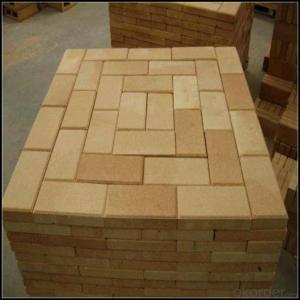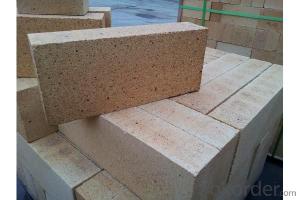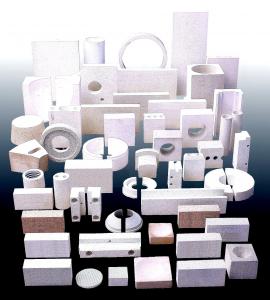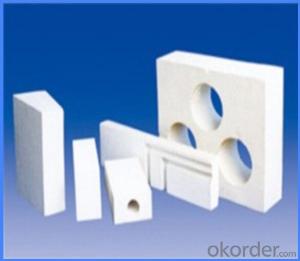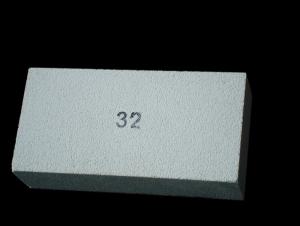Insulating Fire Brick for Steel/Cement/Glass Making Furnaces/Kilns
- Loading Port:
- Shanghai
- Payment Terms:
- TT OR LC
- Min Order Qty:
- 10 m.t.
- Supply Capability:
- 100 m.t./month
OKorder Service Pledge
OKorder Financial Service
You Might Also Like
Quick Details
| Place of Origin: | (Mainland) | Shape: | Brick | Material: | Alumina Block |
| SiO2 Content (%): | - | Al2O3 Content (%): | 42-75 | MgO Content (%): | - |
| CaO Content (%): | - | Refractoriness (Degree): | Common (1580°< Refractoriness< 1770°) | CrO Content (%): | 0 |
| SiC Content (%): | 0 | Model Number: | NG/LG/LZ | Brand Name: | |
| Sample: | Free | Name: | refractory brick | Bulk density: | 0.5-2.8 |
| Refractoriness: | 1150-1790 °C | RUI: | 1250-1520 °C | Apparent porosity: | ≤28 |
| CCS: | 1.5-54MPa | Fe2O3 Content (%): | ≤1.00/1.20/1.65/1.80 |
Packaging & Delivery
| Packaging Detail: | Fumigated wooden pallet, using paper or non-woven fabrics between layers separated, plastic shrink film protected outside, then the straps. Finally make the wooden pallet (95*95cm, 95*100cm) or as your requirements. |
| Delivery Detail: | 20 working days after deposit received. (based on real quantity) |
Specifications
All kinds of refractory brick for different industrial furnaces
28 year old manufacturer
ISO, TUV, SGS certificate
low prices
As a 28-year-old refractory material manufacturer, we have worked with many steel plants, metallurgic plants, cement plants, glass plants, provided them with top notch products and services. Here are the refractory bricks we produce:
| Brick Name | Application |
Clay brick | Normally used in the permanent layer of industrial kilns and furnaces, sometimes used in working layer. |
| Clay insulating brick | Normally used in the insulating layer of industrial kilns and furnaces. |
| High alumina brick | Mainly used in the working layer of blast furnace, airheater, EAF roof, reverberatory furnace, rotary kiln, etc.. It is also used as checker brick in regenerative chamber of open-hearth furnace, plug at gating system, shroud, etc.. |
| High alumina insulating brick | Normally used in the insulating layer of industrial kilns and furnaces. |
| High alumina EPS insulating brick | Normally used in the insulating layer of industrial kilns and furnaces. With higher strength than clay/high alumina insulating bricks. |
| Magnesia carbon brick | Used in working layer of ladle, refining ladle, converter, electric arc furnace, etc.. |
| Alumina-magnesite carbon brick | Used in working layer of ladle, pig iron ladle, electric arc furnace, etc.. |
| Magnesia-calcium brick | Used in working layer of electric arc furnace, refining furnace like AOD, VOD furnaces, etc.. |
| Magnesite-chrome brick | Used at high temperature zone and firing zone of rotary cement kiln. |
| Magnesia brick | Used in permanent layer of converter, AOD furnace, etc.. |
| AZS brick | Normally used at glass melting furnace hearth. |
| Silica brick | Partition wall of carbonization chamber and firing chamber of cock oven; Regenerative chamber and slag pocket of steelmaking open hearth furnace; Soaking pit furnace; Glass melting furnace; Weight bearing areas such as vault of the calcining kilns of refractory silica brick and ceramic; Weight bearing area of airheater; Roof of acid open hearth furnace. |
| Checker brick | Regenerative chamber of blast furnace hot blast stove, flame furnace. |
| Anchor brick | Normally used to strengthen refractory layers of industrial furnace or flue, or is used when the furnace body structure is too thick or overload or the temperature at working area is too high. |
| Baffle brick | Mainly used in regenerative chamber of heating furnace. |
| Purging plug | Blowing gas into the molten steel through it. |
| Purging plug seat block | Purging plug seat block |
| Low carbon brick | Normally used in the working layer of refining ladle, producing high class steel. |
| Carbon free brick | Normally used in the working layer of refining ladle, producing high class steel. |
| Alumina magnesia spinel brick | Mostly used at transitional area of rotary kiln. |
| Corundum brick | Widely used in many kinds of furnaces or kilns. |
| Al-SiC-C brick | Widely used in the working layer of blast furnace, foundry ladle, metal mixer, molten steel trough, etc.. |
If you are looking for solutions for steel making, cement making, alloy steel making, glass making, etc., please do not hesitate to contact us, we can help you with our products and experience
- Q: Can insulating fire bricks be used in the construction of boilers for power plants?
- Yes, insulating fire bricks can be used in the construction of boilers for power plants. Insulating fire bricks are specifically designed to have low thermal conductivity, which allows them to retain heat and prevent energy loss. This property makes them ideal for use in high-temperature applications such as power plant boilers, where efficient heat transfer is crucial for the production of steam and generation of electricity. Additionally, insulating fire bricks are lightweight and have good thermal shock resistance, making them suitable for the demanding conditions found in power plants. Overall, the use of insulating fire bricks in the construction of boilers can help improve energy efficiency and reduce heat loss, leading to increased operational performance and cost savings in power plants.
- Q: Can insulating fire bricks be used for insulation in sewage treatment plants?
- Insulating fire bricks are capable of being utilized for insulation purposes in sewage treatment plants. Specifically designed to endure elevated temperatures and deliver exceptional insulation, these bricks prove to be suitable for deployment in environments characterized by heat and moisture, such as sewage treatment plants. With their low thermal conductivity, they aid in diminishing heat loss and enhancing energy efficiency throughout the treatment procedure. Furthermore, their resistance to chemicals and moisture renders them ideal for enduring the corrosive surroundings typically encountered in sewage treatment plants. Consequently, the usage of insulating fire bricks effectively ensures insulation in sewage treatment plants, thereby aiding in the preservation of optimal operating temperatures and the enhancement of overall efficiency.
- Q: Are insulating fire bricks resistant to flame spread?
- Insulating fire bricks exhibit exceptional resistance against flame propagation. Crafted with utmost precision, these bricks are tailored to endure extreme temperatures while effectively trapping and insulating heat. Constructed from refractory materials with minimal thermal conductivity, they possess remarkable capabilities in impeding heat transfer and thwarting the spread of flames. Widely employed in kilns, furnaces, and fireplaces, where maintaining and managing high temperatures is of paramount importance, these bricks' flame-resistant properties render them an unwavering and secure choice for such environments.
- Q: Can insulating fire bricks be used in high-temperature insulation for cryogenic applications?
- Insulating fire bricks do not meet the requirements for high-temperature insulation in cryogenic applications. They are specifically designed to endure temperatures up to approximately 2300°F (1260°C), which falls significantly below the extremely low temperatures necessary for cryogenic applications. Cryogenic temperatures typically span from -150°C to -273°C (-238°F to -459°F), and insulating fire bricks lack the capability to offer sufficient insulation under these conditions. Instead, cryogenic insulation commonly relies on specialized materials like aerogels or multi-layered insulation systems to guarantee minimal heat transfer and sustain the extremely low temperatures demanded.
- Q: Are insulating fire bricks resistant to nitric acid?
- Yes, insulating fire bricks are generally resistant to nitric acid due to their high refractory properties and chemical stability.
- Q: Can insulating fire bricks be used in the construction of hearth furnaces?
- Yes, insulating fire bricks can be used in the construction of hearth furnaces. These bricks are designed to withstand high temperatures and have excellent insulation properties, which makes them ideal for creating the lining of a hearth furnace. Their ability to retain heat and resist thermal shock helps in maintaining a stable and efficient heating environment in the furnace.
- Q: What are the advantages of using insulating fire bricks over other insulation materials?
- There are several advantages to using insulating fire bricks over other insulation materials. Firstly, insulating fire bricks have a high thermal conductivity, meaning they can effectively insulate against heat transfer. This makes them ideal for applications where heat containment is crucial, such as in furnaces, kilns, and industrial ovens. Their ability to withstand high temperatures and prevent heat loss makes them a reliable choice for insulation. Secondly, insulating fire bricks are highly durable and resistant to wear and tear. They are made from high-quality refractory materials, which are designed to withstand extreme conditions, including thermal shocks and chemical exposure. This durability ensures a longer lifespan and reduces the need for frequent replacements or repairs. Another advantage is their versatility. Insulating fire bricks come in various shapes and sizes, allowing for easy customization and installation in different applications. They can be easily cut or shaped to fit specific requirements, making them suitable for complex geometries or curved surfaces. This flexibility allows for efficient insulation in a wide range of settings. Moreover, insulating fire bricks have excellent insulation properties even at lower densities. This means that they can provide optimal thermal insulation while also reducing the overall weight of the structure. This is particularly advantageous in industries where weight reduction is critical, such as aerospace or automotive manufacturing. Lastly, insulating fire bricks are environmentally friendly. They are typically made from natural and recyclable materials, minimizing their impact on the environment. Additionally, their long lifespan and low maintenance requirements contribute to sustainability by reducing waste generation and energy consumption. In conclusion, the advantages of using insulating fire bricks over other insulation materials include high thermal conductivity, durability, versatility, lightweight, and environmental friendliness. These characteristics make them a preferred choice for insulation in various industries and applications.
- Q: Can insulating fire bricks be used in the construction of brick ovens?
- Yes, insulating fire bricks can be used in the construction of brick ovens. These bricks have high-temperature resistance and excellent insulation properties, making them suitable for retaining heat and preventing heat loss in a brick oven.
- Q: Can insulating fire bricks be used in the construction of glass melting tanks?
- Indeed, the utilization of insulating fire bricks is possible for the construction of glass melting tanks. These bricks are precisely engineered to endure elevated temperatures and offer exceptional insulation characteristics. Thus, they prove to be perfect for application in glass melting tanks, where intense temperatures are necessary for the glass to melt. The insulation properties of these bricks aid in minimizing heat dissipation and preserving the desired temperature within the tank, thereby enhancing the efficiency and cost-effectiveness of the glass melting procedures. Moreover, the durability and thermal shock resistance of insulating fire bricks make them a dependable option for constructing glass melting tanks.
- Q: Can insulating fire bricks be used in a refractory lining?
- Indeed, refractory linings can incorporate insulating fire bricks. These bricks are purposefully crafted to offer thermal insulation and minimize heat dissipation in scenarios involving high temperatures. Possessing low thermal conductivity and exceptional insulating properties, they are perfectly suited for use in refractory linings. By curbing heat transfer to the surrounding environment, these bricks contribute to the enhanced energy efficiency of furnaces, kilns, and other industrial applications. Moreover, insulating fire bricks are lightweight, effortlessly installable, and exhibit commendable strength and durability, rendering them a favored selection for refractory linings.
Send your message to us
Insulating Fire Brick for Steel/Cement/Glass Making Furnaces/Kilns
- Loading Port:
- Shanghai
- Payment Terms:
- TT OR LC
- Min Order Qty:
- 10 m.t.
- Supply Capability:
- 100 m.t./month
OKorder Service Pledge
OKorder Financial Service
Similar products
Hot products
Hot Searches
Related keywords
